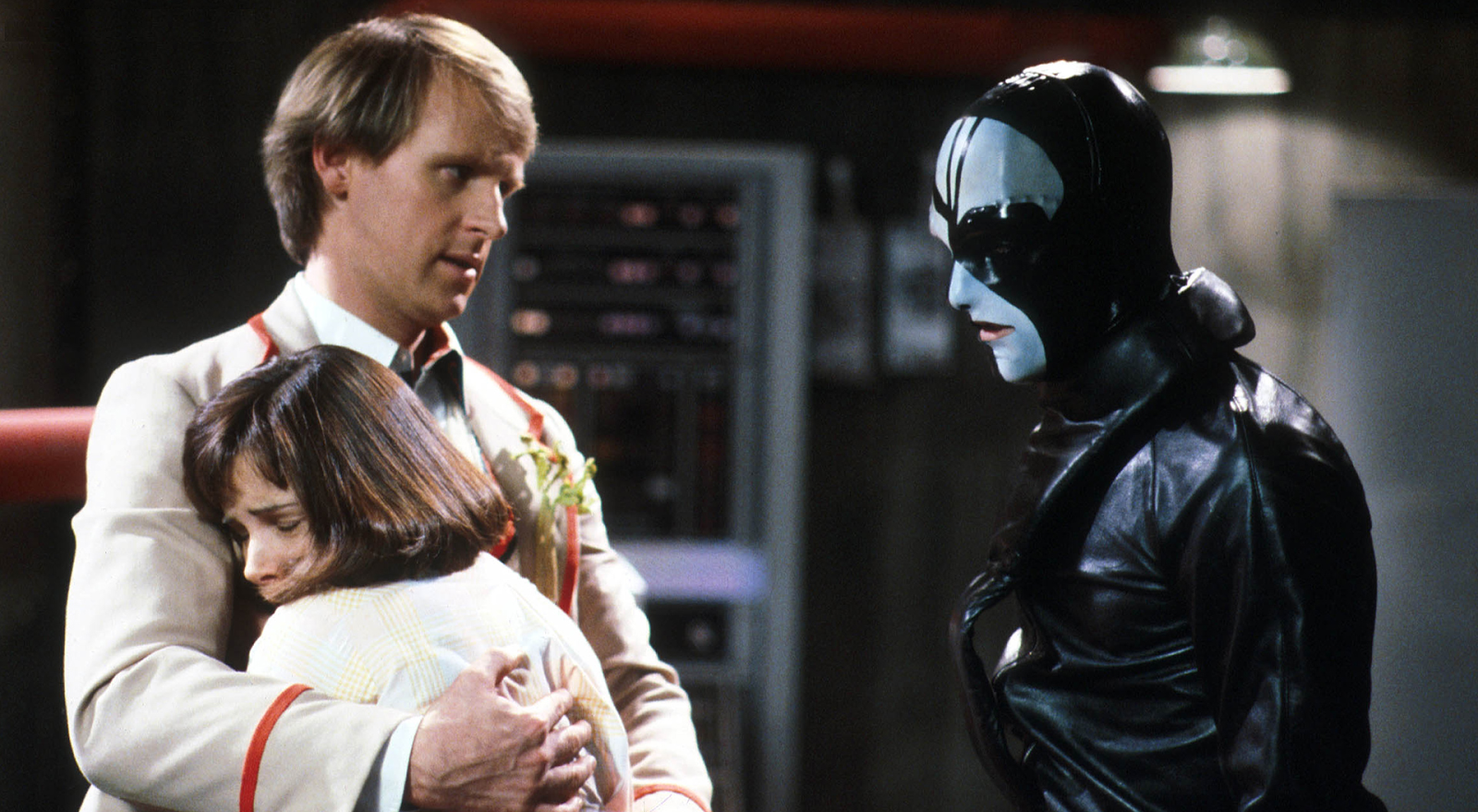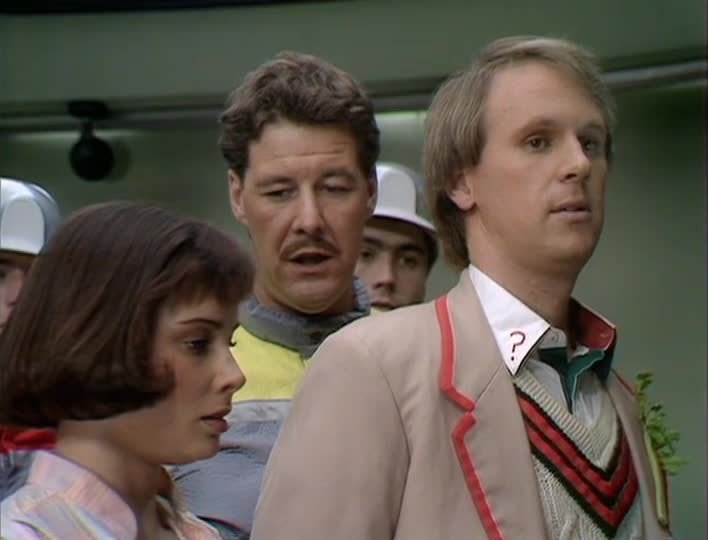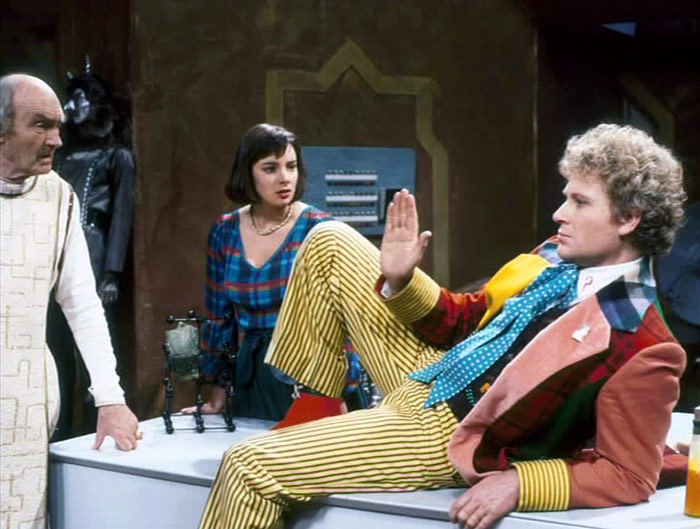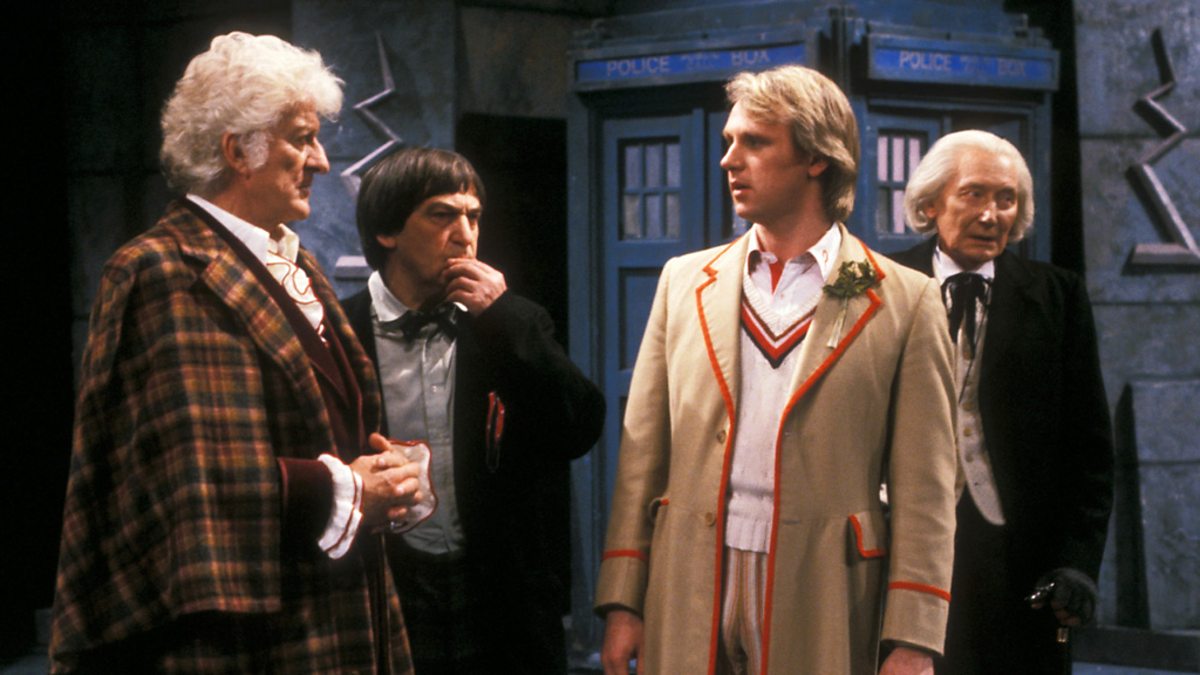What led to the Fifth Doctor Who regeneration in 1984?

Spectrox toxaemia, of course. In ‘The Caves of Androzani,’ the Doctor is exposed to unrefined spectrox – a substance that has the ability to prolong a person’s life. So it’s ironic, in a way, that the Fifth Doctor Who regeneration was triggered by this very substance. And even though the Doctor had the opportunity to save himself (by acquiring the milk of the queen bat, which was the antidote) he chose to give this to his companion Peri, who was also infected.
The fifth Doctor Who regeneration was not certain, though. As he collapsed on the floor of the TARDIS, the Time Lord remarked that it “felt different this time,” and even cried out “Is this death?” as he fell against the console. Shortly after, he saw ghostly apparitions of his former companions as they urged him to keep living.
This was arguably one of the most inventive Doctor Who regenerations in the programme’s history, and came at the tail-end of a story that is often hailed as a classic. Written by series stalwart Robert Holmes, the adventure saw the Doctor and Peri become embroiled in gun running, politics and android warfare in the labyrinthine caves beneath Androzani Minor.

But almost uniquely in the series’ history, this Doctor Who regeneration did not come at the end of the season. The producer John Nathan-Turner wanted to take a different approach; he didn’t want the audience to wait eight months to see the new Time Lord in situ.
And so he took the decision to give the Sixth Doctor a story at the end of Season 21, meaning that ‘The Caves of Androzani’ was immediately followed by ‘The Twin Dilemma.’ The only other time that audiences had seen a ‘mid season’ Doctor Who regeneration was when William Hartnell had changed into Patrick Troughton in 1966. This happened near the start of Season Four, leaving the Second Doctor in charge for all the stories that followed.
Interestingly, Nathan-Turner’s decision had little effect on the ratings. Throughout Peter Davison’s last season, around 6 or 7 million people tuned in for each episode, and ‘The Twin Dilemma’ continued this trend. The series did see a slight ratings boost, however, when Colin Baker’s first full season began the following year, with 8.9 million people turning up to watch the first episode of ‘Attack of the Cybermen.’

But why did Peter Davison decide to leave? Certainly, there was nothing sinister about his departure; his Doctor had proven to be immensely popular, and indeed his arrival had doubled the series’ ratings in 1982. Moreover, when Davison took the decision to go, Doctor Who was still riding after its 20th anniversary celebrations, which had seen a feature-length TV special air on its birthday.
Moreover, the older episodes had garnered new attention after the BBC screened The Five Faces of Doctor Who in 1983, airing repeats of ‘An Unearthly Child,’ ‘The Krotons,’ ‘Carnival of Monsters,’ ‘The Three Doctors’ and ‘Logopolis.’ Doctor Who, it seemed, was more popular than ever.
And perhaps this is why a Doctor Who regeneration was a good idea at this time. Certainly, Peter Davison would be leaving the programme at the peak of its popularity, and leaving it in good shape for his successor.
But this Doctor Who regeneration was also hastened by the shooting of ‘The Five Doctors.’ In the special, Peter Davison’s Doctor encounters his former incarnations, including the Second Doctor Patrick Troughton. And during the filming, Troughton advised Davison not to stay in the role for too long. He intimated that three years was the optimum time for staying in the TARDIS, and that a longer stint might make it harder for him to find other work.

This came to a head when John Nathan-Turner asked Davison to stay on for a fourth year, and Davison declined, citing Troughton’s advice as being key to his decision.
As such, the fifth Doctor Who regeneration came at the end of a busy studio day in 1984, with both Peter Davison and Colin Baker on set to film the handover. Apparently, Peter Davison had been winding Nicola Bryant (Peri) up about Colin Baker, warning her that he was a difficult man to work with and that she was in for a tough time. Davison later admitted that this was all said in jest, as he and Colin Baker were in fact good friends.
For the transition itself, Baker wore a duplicate of Davison’s costume, which had been altered to accommodate Baker’s physique.
And while some may claim that this Doctor Who regeneration came “not a moment too soon,” it was clear that Peter Davison was going to be missed. And the reaction to Colin Baker’s Doctor was mixed, at best, after the transmission of ‘The Twin Dilemma’ – but this was the reaction the production team had hoped for. They wanted to make Baker’s Doctor somewhat unpredictable, and challenge people’s expectations.
It’s hard to say whether this was an effective move or not, but it was certainly a bold one – and one that was mirrored, to some extent, in Peter Capaldi’s Doctor when he took over the role in 2013. But that is another story.
What are your memories of the fifth Doctor Who regeneration? And how did you feel about the Sixth Doctor after watching ‘The Twin Dilemma’? Let me know in the comments below.
Read about the Sixth Doctor’s regeneration here.

Fifth Doctor cricket sweater– order now from the Lovarzi shop!


One great little touch is at the end of episode three after commandeering Stotz’s ship. For a moment, the Doctor seems to see the patterns of regeneration forming in front of his eyes, but shrugs it off. Graham Harper has said that the intention was to show that he’s starting to regenerate, but holds it off as he can’t allow himself to “die” before rescuing and curing Peri. One of the Fifth Doctor’s most understatedly heroic moments…